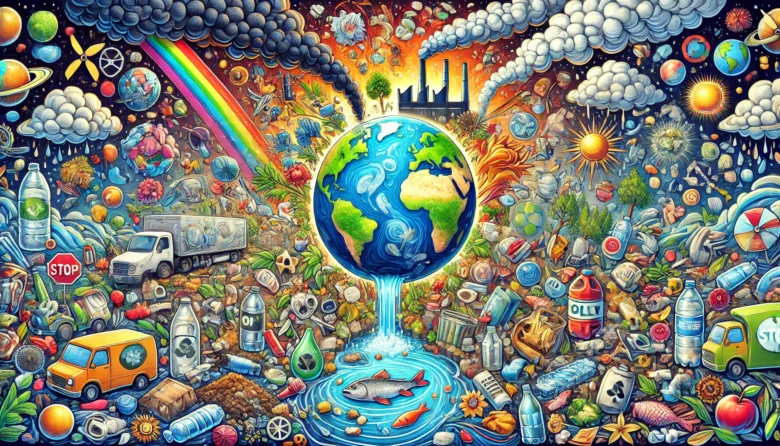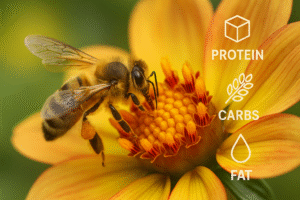Fun Fact: Did you know that some chemicals in our everyday lives are as toxic to our bodies as car exhaust fumes?
In today’s world, we’re surrounded by more than just the natural environment; we’re also surrounded by man-made elements that can harm our health. These are often invisible dangers known as environmental toxins. From the air we breathe to the food we eat, toxins have become an undeniable part of our daily lives, quietly impacting our health. Let’s dive into the world of environmental toxins and explore how they’re affecting human health, from seemingly minor ailments to severe long-term diseases.
The Sneaky Sources of Environmental Toxins
Environmental toxins are harmful chemicals that can be found in the air, water, soil, and even within the walls of our own homes. Some of the most common toxins include lead, mercury, pesticides, phthalates, bisphenol A (BPA), and polychlorinated biphenyls (PCBs). These toxic substances come from various sources:
Industrial Pollution: Factories releasing chemicals into the air and water create pollution hotspots, affecting nearby communities and ecosystems. Companies in industries like petrochemicals, steel, and manufacturing contribute to this pollution.
Household Products: Everyday products like cleaning agents and cosmetics often contain volatile organic compounds (VOCs), which can be harmful if inhaled or absorbed through the skin.
Pesticides: Used extensively in agriculture to protect crops from pests, pesticides can stick around on produce and seep into soil and groundwater, making their way to our dinner plates.
Plastic Products: Many plastics have chemicals like phthalates and BPA, which are associated with hormone disruptions and developmental issues, particularly in young children.

How Environmental Toxins Affect Human Health
The effects of environmental toxins can vary widely, depending on the type of toxin, exposure level, and an individual’s health. Here’s how these toxins often affect different parts of our body:
Respiratory System: Airborne pollutants, such as VOCs, particulate matter (PM), and nitrogen dioxide (NO₂), are significant contributors to respiratory problems. Studies have shown that long-term exposure to these pollutants can lead to chronic conditions like asthma and bronchitis. A 2020 study in Delhi highlighted the rise in asthma cases in children living near high-traffic areas due to increased PM exposure.
Nervous System: Heavy metals like lead and mercury are known neurotoxins. Exposure to lead, for example, has been linked to learning difficulties, behavioural challenges, and reduced IQ in children. Lead poisoning from older paint in houses has been a persistent problem in countries around the world.
Endocrine System: The endocrine system, which regulates hormones, is highly sensitive to chemical disruptions. Substances like BPA, often found in plastic containers and cans, mimic estrogen and can lead to hormonal imbalances.
Reproductive Health: Exposure to toxins like phthalates has been associated with reduced fertility, particularly in men, as phthalates can lower testosterone levels. Pregnant women exposed to certain chemicals are also at a higher risk of miscarriage or birth defects.
Immune System: Many pesticides and industrial chemicals have been shown to weaken the immune system, making individuals more vulnerable to infections and diseases. Long-term exposure to toxins can trigger chronic inflammation, raising the likelihood of autoimmune diseases.
Real-Life Impact: A Look at Notable Cases
The Love Canal Tragedy
In the late 1970s, Love Canal in New York became infamous when residents started experiencing health problems like cancer, birth defects, and neurological disorders. This was traced back to toxic waste buried beneath the neighbourhood by a local company, Hooker Chemical. The Love Canal incident highlighted the urgent need for responsible waste disposal and the lasting impact of environmental toxins on human health.
The Flint Water Crisis
The water crisis in Flint, Michigan, revealed how severe the impact of environmental toxins could be. Due to lead-contaminated water pipes, residents were exposed to lead, resulting in long-term health issues, especially in children. Lead poisoning has irreversible effects, with children experiencing learning difficulties, aggression, and physical development delays.
Everyday Actions to Reduce Exposure
While we may not be able to escape toxins entirely, there are ways to minimize exposure:
Use Natural Cleaners: Swap out chemical-heavy cleaners for natural alternatives like vinegar, baking soda, and essential oils.
Choose Organic Produce: Organic fruits and vegetables are grown without synthetic pesticides, reducing the intake of harmful chemicals.
Opt for Glass and Stainless Steel: To avoid BPA and phthalates, choose glass or stainless-steel containers over plastic ones.
Filter Your Water: Using a water filter at home can help remove heavy metals and contaminants like lead, chlorine, and pesticides.
Ventilate Your Home: Let fresh air in regularly to reduce indoor air pollutants. Houseplants can also improve air quality by absorbing toxins.
Check Product Labels: Look for products labelled “phthalate-free,” “BPA-free,” or “low-VOC” to reduce exposure to harmful chemicals in everyday items.
Conclusion
Environmental toxins are a silent, often invisible threat that poses real risks to our health. From respiratory and nervous system issues to reproductive and immune health challenges, the effects of these toxins are wide-ranging and sometimes devastating. Reducing exposure to these toxins may feel overwhelming, but small steps can make a difference.
As consumers, we can support eco-friendly products, advocate for cleaner air and water, and educate others on the dangers of toxins. By making our environment cleaner and safer, we can take proactive steps toward protecting our health and that of future generations.
Author’s Note
Thank you for taking the time to read this article on environmental toxins and their impact on human health. I hope this information encourages you to make small adjustments that can contribute to a healthier lifestyle. Every bit counts!
G.C., Ecosociosphere contributor.
References and Further Reading
- Environmental Protection Agency (EPA): Understanding Environmental Toxins
- World Health Organization (WHO): Health Risks of Environmental Chemicals
- Mitogenesis: Enhancing Your Body at the Cellular Level. https://www.mitogenesis.health/post/heavy-metal-exposure-and-the-effects-on-people-with-a-chronic-illness
- Upcycling Food: How You Can Reduce Food Waste And Help The Environment – Wellness Works. https://www.wellnessworksdetroit.com/upcycling-food-how-you-can-reduce-food-waste-and-help-the-environment/
- How to Build an Eco-Friendly Home – The Homestead Survival. https://thehomesteadsurvival.com/how-to-build-an-eco-friendly-home/




